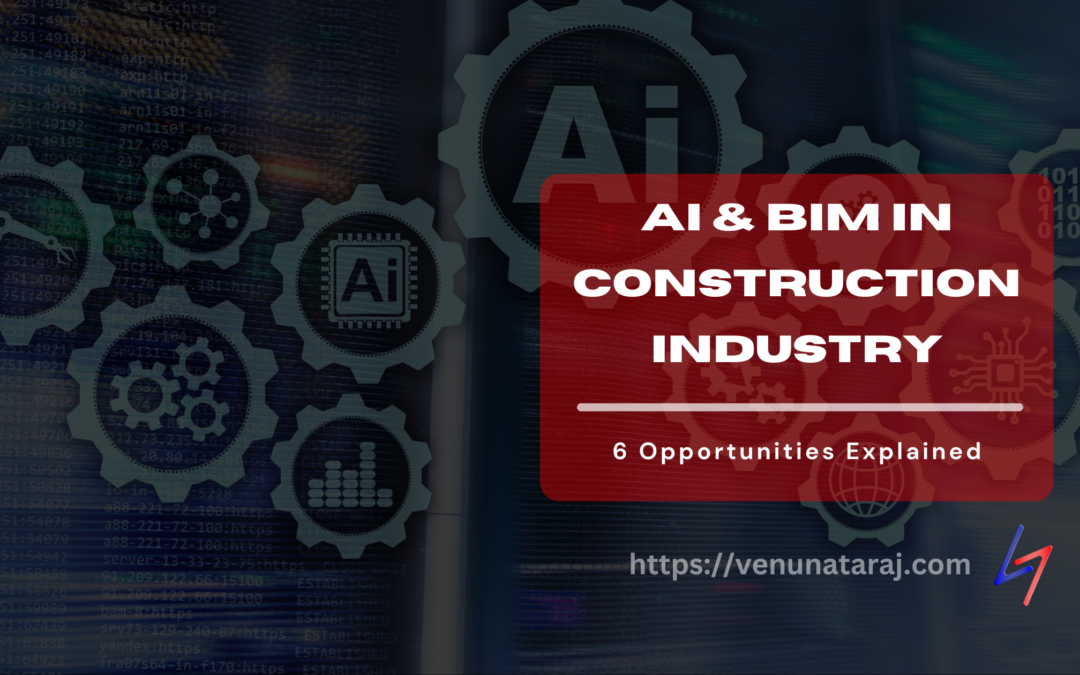The integration of AI and BIM (Artificial Intelligence & Building Information Modeling) is revolutionizing the construction industry. This synergy is not only optimizing the design and construction processes but also enhancing safety measures, improving productivity, and facilitating better project management. In this comprehensive exploration, we delve into how AI is transforming BIM, making it a more powerful tool for the architectural, engineering, and construction (AEC) sectors.
Table of Contents
Introduction
Building Information Modeling (BIM) has been a cornerstone in the construction industry, offering a digital representation of the physical and functional characteristics of a building. However, the advent of Artificial Intelligence (AI) has taken BIM to unprecedented levels of efficiency and effectiveness. AI’s ability to process vast amounts of data and learn from it is enabling construction professionals to predict outcomes, automate tasks, and make more informed decisions.
Enhancing Design and Planning with AI

One of the most significant impacts of AI on BIM is in the realm of design and planning. AI algorithms can analyze historical data and trends to optimize building designs for energy efficiency, structural integrity, and material utilization. This not only leads to innovative and cost-effective designs but also ensures that buildings meet the highest standards of sustainability and safety.
Predictive Analytics for Improved Project Management
AI’s predictive analytics capabilities are invaluable for project management in construction. By analyzing project data in real time, AI can predict potential delays, budget overruns, or quality issues. This allows project managers to proactively address these concerns, reducing the likelihood of costly setbacks. The predictive power of AI, when combined with BIM, saves both time and money, ensuring projects are completed within budget and on schedule.
Streamlining Collaboration and Communication
Collaboration in construction projects is complex, with multiple stakeholders involved. AI-powered tools integrated with BIM can streamline collaboration by analyzing communication patterns, identifying bottlenecks, and suggesting improvements in communication and decision-making processes. This leads to smoother project execution and better outcomes by ensuring all stakeholders are working from the most current and accurate project information.
Improving Safety with AI and BIM
Safety is paramount in construction, and AI is playing a significant role in enhancing safety measures. By processing images and videos from construction sites, AI can identify potential safety hazards, predict accidents, and suggest preventive measures. This proactive approach to safety, powered by the synergy of BIM and AI, is making construction sites safer for workers and reducing the incidence of accidents.
Asset Management and Maintenance

The integration of BIM and AI extends beyond the construction phase, transforming how buildings are managed and maintained. Real-time monitoring of building systems through sensors and IoT devices, combined with AI’s predictive analytics, allows for predictive maintenance. This not only extends the lifespan of building systems but also ensures they operate at peak efficiency, leading to cost savings and improved building performance.
Challenges and Considerations
While the fusion of AI and BIM presents numerous benefits, it’s not without its challenges. Data privacy and security issues, the need for skilled AI professionals, and the initial costs of implementing AI systems are all important considerations for construction companies. However, the long-term advantages, including cost savings, efficiency improvements, and enhanced safety, far outweigh these challenges.
The Future of Construction: AI-Driven BIM
As the construction industry continues to embrace digital transformation, the role of Artificial Intelligence in reshaping BIM is only going to become more prominent. This synergy promises to make construction more efficient, sustainable, and safer. With the power of AI, construction projects are set to reach new heights of innovation and productivity. Embracing this technological revolution is not just an option but a necessity for staying competitive in the modern construction landscape.
The integration of BIM and AI represents a significant leap forward for the construction industry, promising to make construction projects more efficient, sustainable, and safer. As we continue to explore and expand the capabilities of these technologies, the future of construction management looks brighter than ever.
Further Reads:
External Sources:
[1] https://www.constructionplacements.com/how-bim-and-ai-will-revolutionize-the-construction-industry-in-2023/
[2] https://www.linkedin.com/pulse/artificial-intelligence-reshaping-bim-nwxyf
[3] https://papers.ssrn.com/sol3/papers.cfm?abstract_id=4616055
[4] https://inapp.com/blog/ways-bim-and-ai-are-going-to-impact-the-future-aec-industry/
[5] https://smart-structures.com/advancements-in-bim-empowering-collaboration-and-streamlining-construction-projects/
[6] https://satabim.com/bim-ai/
[7] https://www.mdpi.com/2075-5309/13/12/2944
[8] http://www.bim-aec.com/2020/03/13/the-role-of-artificial-intelligence-ai-in-bim/
If you are interested in reading further about BIM for Analysis:
[1] https://venunataraj.com/bim-for-building-energy-analysis-management-importance/

